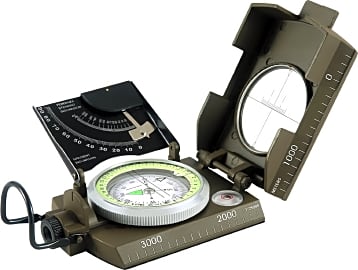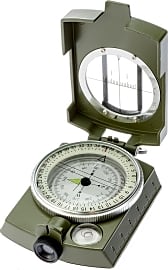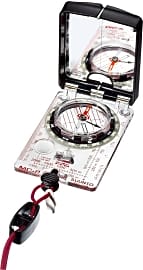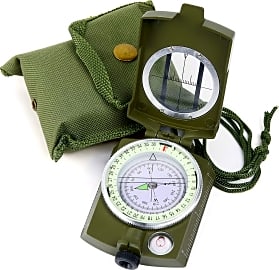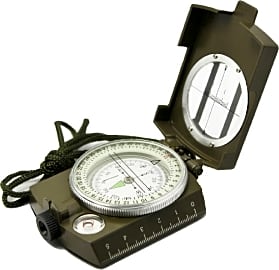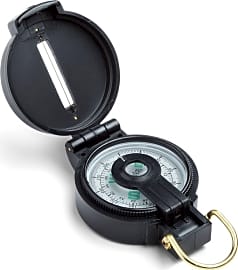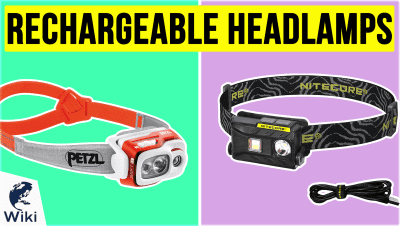The 9 Best Lensatic Compasses

This wiki has been updated 43 times since it was first published in October of 2015. Perfect for maintaining your bearings and preventing you from getting lost on wilderness hikes, camping trips or even military missions, these rugged and long-lasting lensatic compasses will steer you right every time while you're away from civilization. Boasting durable housings, reading lenses and sighting wires, and coming in at a range of prices, there's one for every type of adventure. When users buy our independently chosen editorial recommendations, we may earn commissions to help fund the Wiki.
Editor's Notes
May 06, 2020:
Removed the Under Control Tactical Military Grade, the Vonoto Professional, and the Silva Ranger 515 because of availability issues. Added the Mil-Tec 15791, the UST Heritage, and the Sportneer Military.
Before putting yourself in a possibly dangerous situation where you'll have to rely on your compass, make sure that you familiarize yourself with the functions of a compass and how to interpret the information that they provide.
The lensatic compass is a very common style because of its accuracy and its many uses. The Cammenga 3HCS has mil markings for military applications and degree markings for orientation and normal land navigation. Since it has a magnifying lense on the rear sight, you can use the compass-to-cheek method (where you lower the lid onto the rear sight and align the notch with the sighting wire) to determine the direction you want to travel to or identify a target landmark. It has several tritium points which produce their own light so you can use them during the night. If you're considering buying one of these from a surplus store, remember that tritium is radioactive and so it has a half-life that will slowly reduce its luminosity. Its 12-year half-life means that a 12-year-old tritium compass will have roughly half of the brightness it had when it was new. Therefore, it is usually better to just buy them new than used. Phosphorescent compasses like the Eyeskey EK4076 have to be 'charged' by sunlight or flashlights but their luminosity won't degrade like tritium.
How To Find Your Way
For starters, the doctrine of western masculinity forbids it.
Not everybody has a good sense of direction, and, as folklore suggests, leaving a trail of breadcrumbs in your wake doesn't exactly solve the problem. I mean, if everybody did that, we'd eventually have no way of knowing whose breadcrumbs belonged to whom.
Stopping and asking for directions has its drawbacks, as well. For starters, the doctrine of western masculinity forbids it. If you should choose to subvert this doctrine, you'd still have no idea whether you could trust the directions you got. These are strangers we're talking about here, and even if they don't mean you harm, they might just be stupid.
It falls upon us, then, to have the tools to find our own way, and a lensatic compass, often paired with a good map, is the best way to accomplish this. Of course, these are useless if you don't know hoe to use them.
A lensatic compass traditionally unfolds into three components. The first of these, which sits at the top of the folded compass, is the sight wire. This lines up with an index marker on the compass face. All you have to do is line up some object in the distance with the sight wire and look through the third element–a folding lens–to see the exact bearing of the distant object.
This is a great way to get a sense of the direction you choose, so you can keep track of your movements should you need to retrace your steps. If you have a map telling you the specific direction in which you must travel to reach your destination, all you have to do is swap two of the steps.
First, you turn your body until you line up the index marker on the face of the compass with your intended bearing. Then, simply glance up through the sight wire to an object in the near distance that you can approach. Stop there, measure again, find a new object and repeat. By this method, you will reach your destination without fail.
A Compass In The Dark
Most of the lensatic compasses on our list follow the traditional design associated with the compasses issued by the US military. In fact, two of the compasses on our list are the very units contracted for production by the US government.
That doesn't mean that there's no room for innovation, though, nor does it mean that this type is the right type for you. For example, traditional lensatic compasses require you to look through a small lens to view the compass face and get your bearing.
Phosphorus absorbs light and holds it as energy, which is why it's one of the chemicals used in the construction of solar panels.
There are models on this list that use mirrors instead of sighting wire, or that employ bubble levels and horizon demarcations on a cross-hair sight to evaluate the field before you. If you're a purist, you'll want to reach for the original US-issue compass, but don't let that sense of purity cause you to write off other technologies.
Then, there's the question of visibility in the dark. If you left all these compasses out in the sun, then brought them into a cave and tried to use them, you'd be able to see all of them clearly. Conversely, if you left them in a cave for a day, then took them out at night and tried to navigate, only a few would have visible faces.
That's because the glowing elements in these compasses are either made from phosphorus or tritium. Phosphorus absorbs light and holds it as energy, which is why it's one of the chemicals used in the construction of solar panels. Tritium, on the other hand, is actually radioactive.
Don't freak out, though. Tritium radiates beta particles that can't penetrate the skin, and its biological half-life is short enough that you could ingest enough tritium to fill 100 compasses and probably never notice. The downside to tritium is that is has a half-life of approximately 12 years, meaning that if 25 years go by before you pass this compass down to your child, it likely won't give off a glow any more.
Directed To The New World
Before the discovery of polar magnetism and its application to navigational compasses, travelers by land and sea alike relied on charts, maps, landmarks, and celestial bodies to find their way. Of course, being lost at sea under incessantly cloudy skies made for some interesting navigation.
Of course, being lost at sea under incessantly cloudy skies made for some interesting navigation.
The magnetic compass first appeared in China during the Han dynasty. This was sometime between the 2nd century BCE and the 1st century CE. The funny thing is, the device wasn't first used for navigation at all. Instead, the erection of new buildings relied on magnetic properties to guide the flow of energy through a space as per the tenets of feng shui. The Chinese wouldn't adapt the compass for navigation until the 11th century.
Most historians believe that Arabs in the Middle East introduced the compass to eastern Europe, and that it made its way west for there. Written evidence exists that references the navigational use of a magnetic compass in the English Channel as early as 1187. About 300 years after that, a rather well-known Italian explorer pointed his compass west from Spanish shores, and the rest is an eventful and bloody history.



